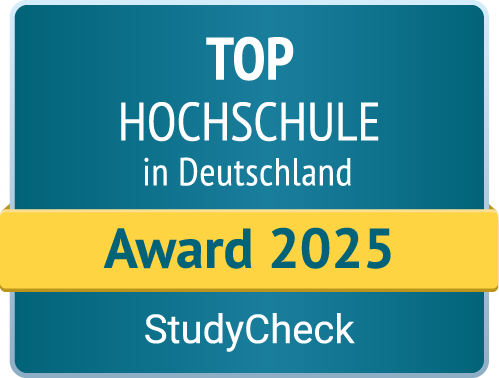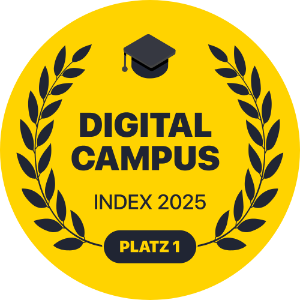MIK
Examples for Central Project Modules

An audio-visual art project EXCHANGE - BACHLUTHER comes to Ansbach
For the 500th anniversary of the Reformation, the audio-visual art project EXCHANGE - BACHLUTHER was developed by a German-Australian artists' collective. Six multimedia objects on Martin Luther's Catechism have already been shown in Berlin Cathedral and the Bachhaus Eisenach.
During the Bach week (Bachwoche) Ansbach the six objects were shown in the Kunsthaus Reitbahn Ansbach in combination with two other interactive installations, one of which was presented on the campus of Ansbach University (foyer of the 50s building).
Twelve light and media artists, mostly students, alumni and teachers from Ansbach University of Applied Sciences and the University of Technology Sydney (UTS), participated in the exhibited works. Students from the master’s programme in Multimedia Information and Communication and the bachelor's programme in Multimedia and Communication worked hard on the objects, which were then shown to the general public in Ansbach.

Multimedia art for the Reformation in Bachhaus Eisenach
Following the preview of the exhibition "Text: Luther & Musik: Bach" at Berlin Cathedral which ended last Sunday with 80,000 visitors and much praise from the exhibition team of Berlin Cathedral, this exhibition will open in an extended form on 28 April at the Bach House, (Bachhaus) in Eisenach.
This development project of the Competence Center for Sound and Interaction at Ansbach University of Applied Sciences (which also involves the collaboration of students) can now be seen in its expanded form in an installation by the international artist collective tranSTURM. MIK master student David Ferstl created a four-channel soundtrack for the installation "lux_chorale". The control technology of the installation was developed by MIK master student Michael Kirschner in cooperation with scientific assistant Robert Krämer
The exhibition opened on 10 March in Berlin Cathedral. Six multimedia boxes on Luther's catechism complete this exhibition. These installations were created by students and teachers from the University of Technology Sydney (UTS) and Ansbach University of Applied Sciences in cooperation with Australian artists and the Bachhaus Eisenach.
The inspiration came from two historical cases of media "crossover": Luther's demand that the Word of God be preached and sung, and Bach's arrangment of Luther's Catechism Songs in his "Organ Mass. Luther's "Catechism", first published in 1529, was the basis of teaching in Protestant schools and parishes for many centuries. But Luther did not only write these "question pieces" on six core Christian topics: Law, faith, prayer, baptism, confession and communion. He wrote a song for each piece – by simply singing the pupils could then learn the basics of their faith. Thus, 160 years later at 6 o'clock each school day of Johann Sebastian Bach began with the singing of Luther's six catechism songs. In 1739, on the anniversary of the Leipzig Reformation, Bach transformed the same songs into artistic compositions in his "Organ Mass".
Arranged according to the school days Monday to Saturday, ten very different artists, photographers, painters, choreographers, stage designers, multimedia artists and composers created space, light and sound installations, each dealing with one of the six pieces of Luther's Catechism.
The works were coordinated by two university teachers, Prof. Dr. Cornelius Pöpel (Ansbach University of Applied Sciences) and Michael Day (UTS Sydney) as well as the internationally renowned light artist Ingo Bracke. Students, Hannes Böck, Jan Kreusel, Jamie Lay and Joana Rousseva (all multimedia and communication) created soundtracks to the catechism steles, David Ferstl (multimedia information and communication) oversaw the development as tutor.
© 2025 Hochschule Ansbach

